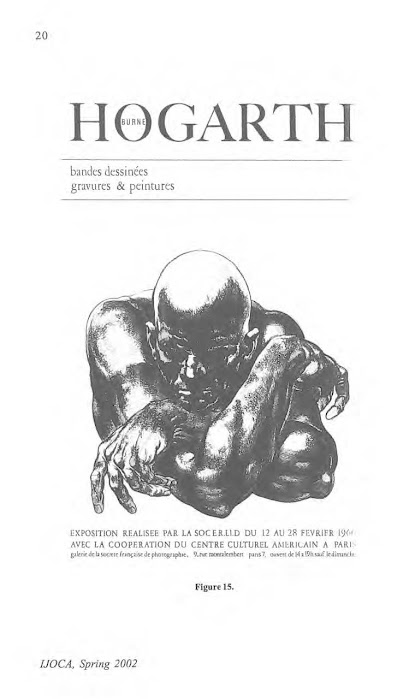reviewed by James Willetts
Jimmy Kugler and Michael Kugler, Into The Jungle! A Boy’s Comic Strip History of World War II, Jackson: University of Mississippi Press, 2023. < https://www.upress.state.ms.us/Books/I/Into-the-Jungle>
Few readers, even those intimately familiar with 1940s comics, are likely to have heard of Jimmy Kugler. As a schoolboy creator of comic strips, Kugler fits into a long tradition of children producing their own cartoons in imitation of commercial comics. Into the Jungle! collects his war stories for publication for the first time. Written and drawn when Kugler was an adolescent in the immediate aftermath of World War II, his strips present a fictionalized reflection of the war in the Pacific through a conflict between anthropomorphic frogs and toads. Drawn in pencil on both sides of scrap paper – including on the back of school handouts on poetry and public speaking – these comic strips present an archive of one boy’s response to the war. The story is told over the course of four chapters; “The Fall of Frogington,” “The Fate of a Toad Convoy,” “The Battle of Toadijima,” and “The Fall of Eagle Island.” Each of these are reprinted in full, amounting to over a hundred pages of material with a small number of supplementary images from Kugler’s horror comic and one-off panels.
This collection of strips is compiled by Jimmy’s son, Michael Kugler, a history professor at Northwestern College in Iowa. Kugler provides a biography of his father, an introduction to his comics, as well as a brief explanation of what is happening in each section and how it relates to the broader course of the fictional war between frogs and toads. Michael’s sections are enlightening and demonstrate both a deep love for his father’s legacy and a recognition of what a reader will need to understand the comics. One of the central problems in compiling the book is that there is no official chronology to fit the strips into. Once the war begins “it is not clear which chapters follow which.” (29) Michael has worked to try and develop an order for the stories based on in-text developments about the course of the war. He also argues for a reassessment of what order Jimmy wrote certain comics in. He disputes the chronology of Paul Karasik who suggests, in ““Die, Frogs!”: The Lost Comics of James Kugler” in The Comics Journal no. 307 (Winter-Spring 2021), that the war comics were written and drawn after “The Mystery of the Winged Frogs,” Kugler’s horror comic, which was reprinted in full alongside Karasik's article. Karasik's analysis of the drawings in the comic strips suggests that Kugler's artistry underwent a process of development between "The Mystery of the Winged Frogs" and the “War of Frogs and Toads,” which Professor Kugler reverses. Instead, he argues that the “Famous War of the Frogs and Toads” is a thematically – if not artistically – more sophisticated story and likely served as one of the last things that Jimmy Kugler created.
Michael Kugler situates these comics within the wider history of American post-war adolescence. He notes the influence of newspaper comic strips, comic books and movies on his father’s work. Jimmy’s father worked as a typesetter for Lexington’s newspaper, the Clipper. While the paper didn’t carry syndicated cartoons, Jimmy’s father may have provided him with cartoons from other papers. Certainly, Jimmy’s personal items included a page of comics from Salt Lake City’s Deseret News, alongside collected reprints of Li’l Abner, Tarzan, Mickey Mouse comics, and Alley Oop. Alongside these, Jimmy Kugler’s war comics were certainly influenced by the horror films showing at Lexington’s Majestic Theatre. These disparate influences combine to create a vision of a war without mercy infused with individual acts of heroism and brutality.
The diversity of Kugler’s pop-culture influences was also filtered through wartime propaganda, with anti-Japanese films and imagery taking form in his comic strip’s portrayal of brutal toads attacking the peaceful cities of the frogs. Once the war begins with the toads attack on Frogington, neither side shows any remorse for their actions. There is no attempt at dialogue or character development for either side. The only focus on both sides is a campaign to exterminate the other completely. While the narrative chronology of the war is not always clear, the duels between individuals or airplanes are lovingly rendered. Kugler’s depiction of aerial combat is some of his best work. While the majority of the illustrations are unsurprisingly crude, Michael does well in drawing attention to the sophistication of his father’s cartoons of aircraft. Jimmy had been drawing pictures of planes which he kept in a scrapbook for years before he started his war comics. He may have observed American fighters from nearby airbases engaging in training flights, alongside reading newspapers, or maybe comics, as a reference. While his frogs and toads are always shown in profile, Kugler includes a range of perspectives to portray aircraft in action, from overhead shots of a flight of enemy planes approaching Frogington through the clouds (67) to bombing runs, enemy aircraft strafing defenseless civilians, and even aerial dogfights (86-87).
Michael Kugler notes the importance of his father’s comics as a largely untapped archive representing a “a boy’s imagination filtering his experience of popular culture and mass media immediately after wartime.” (27) Kugler’s stories can – and should be - analyzed as both an artifact of post-war adolescence and as objects of historical memory. Introducing these comics to a wider audience makes Into the Jungle! a significant first step in what is sure to become wider study of Kugler’s work.





















